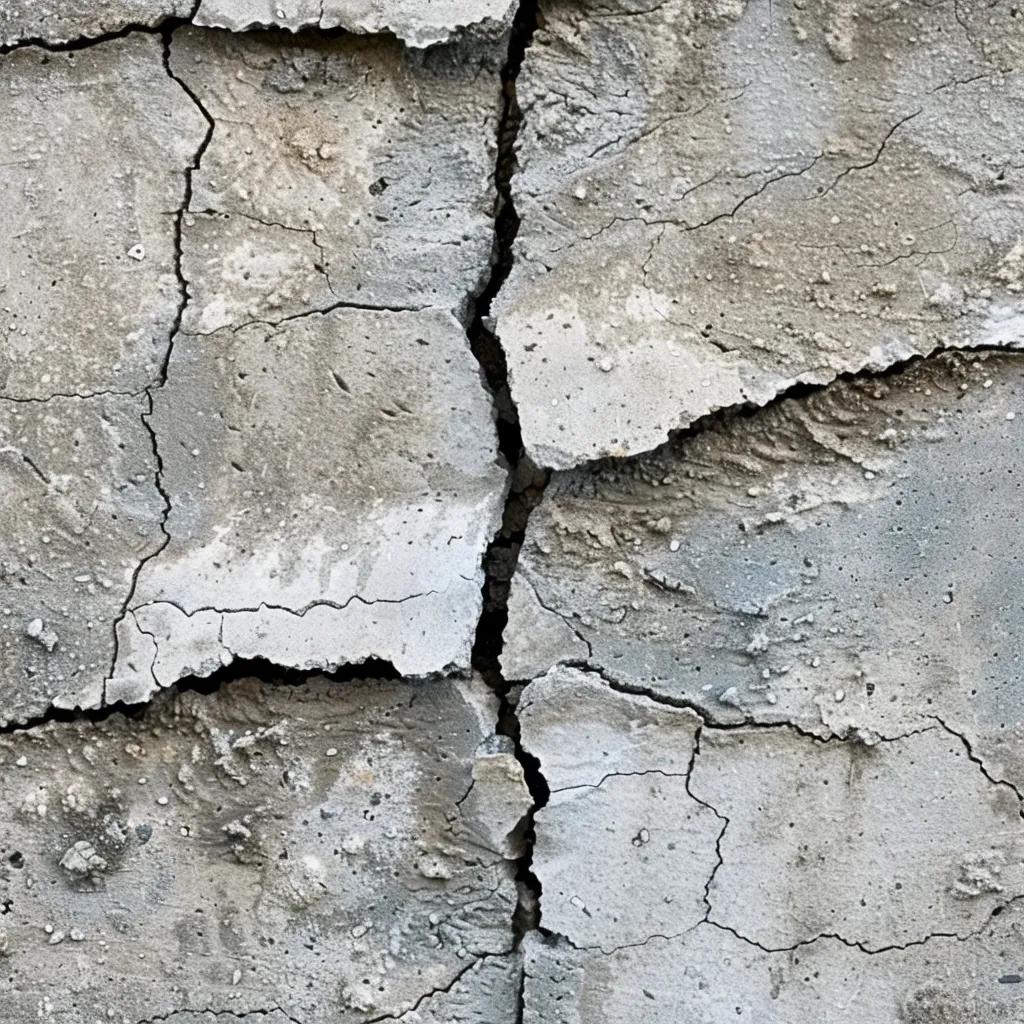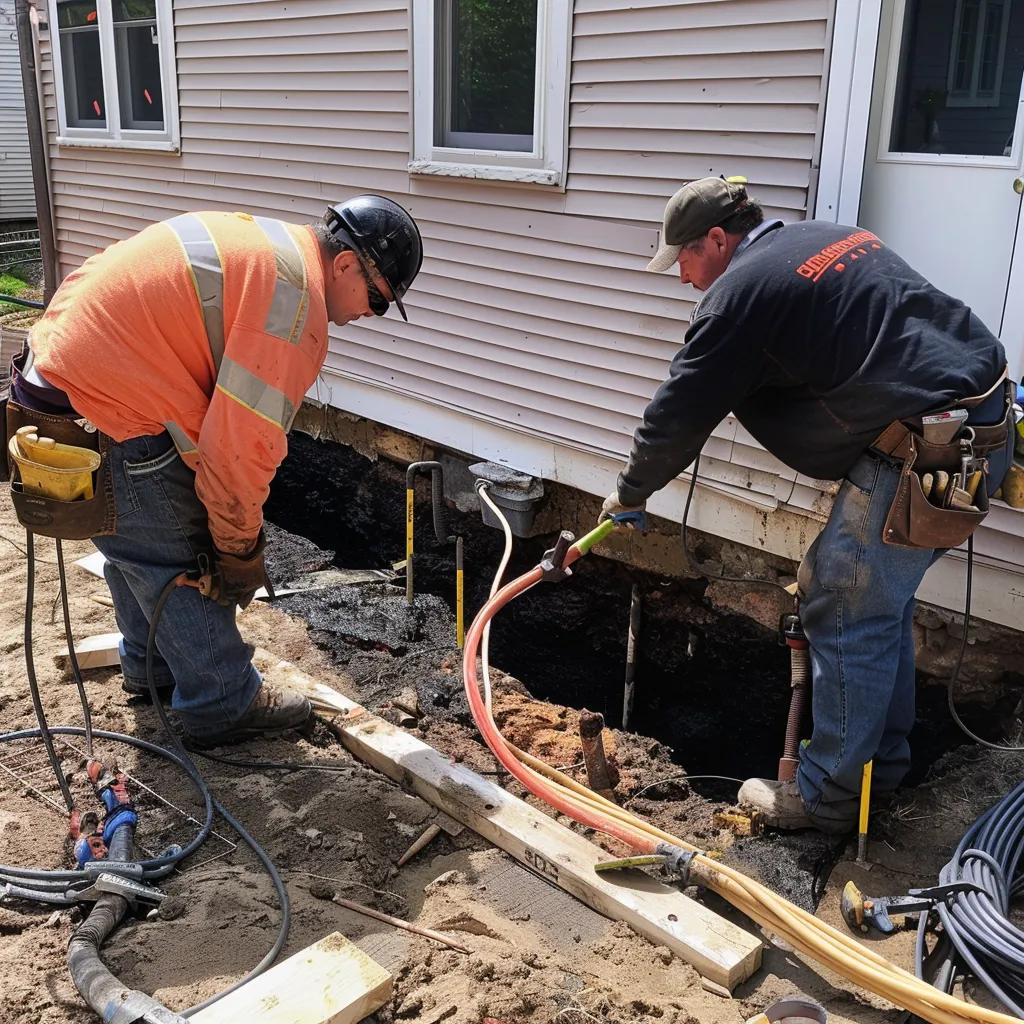Common Causes of Foundation Cracks in Boston: Understanding, Identifying, and Repairing Foundation Damage
Boston’s historic homes and modern buildings often face the challenge of foundation cracks caused by regional soil conditions, moisture fluctuations, frost heave, and structural aging. Recognizing how crack type, underlying cause, warning signs, repair solutions, cost factors, and preventive measures interrelate empowers homeowners and commercial property owners to protect structural integrity and property value. In this guide, we define the most common crack types in Boston basements and walls, explore primary causes from soil movement to tree roots, outline interior and exterior warning indicators, explain when professional intervention is urgent, present tailored repair services from FMF Foundation Repair, detail cost ranges, and share proactive strategies to prevent future damage.
The Most Common Types of Foundation Cracks in Boston
Foundation cracks are structural or cosmetic splits in concrete, masonry, or block walls that occur when stress exceeds material strength. Understanding crack morphology helps assess severity, guide repairs, and restore stability. For example, vertical cracks often reflect normal settling, while horizontal breaches signal lateral pressure. Identifying each type lays the groundwork for accurate diagnosis and practical solutions.
Common crack types in Boston include:
- Vertical Cracks – typically due to shrinkage or minor settlement
- Horizontal Cracks – caused by hydrostatic pressure and soil loads
- Stair-Step Cracks – follow mortar joints in masonry block walls
- Hairline and Shrinkage Cracks – surface-level stress relief lines
- Structural vs. Non-Structural Cracks – classification based on severity
Each crack profile indicates specific mechanisms and repair requirements, establishing a clear path to stabilization and waterproofing.
Vertical Foundation Cracks and When They Are a Concern

Vertical foundation cracks form when concrete shrinks during curing or when minor settling occurs. These cracks run perpendicular to the footing and generally measure less than 1/8 inch in width. While narrow vertical splits often pose no structural risk, they can allow moisture intrusion and require sealing t3o prevent water damage. However, vertical fissures wider than 1/4 inch or those accompanied by wall movement warrant professional inspection through an in-depth foundation repair Boston MA to rule out uneven settlement.
Why Horizontal Foundation Cracks Are More Serious
Horizontal cracks appear parallel to the ground and indicate substantial lateral pressure from saturated soil or earth movement. Hydrostatic pressure against basement walls forces water into weak points, creating structural stress that can lead to bowing walls and eventual collapse. Addressing horizontal breaches quickly involves installing interior or exterior drainage systems, reinforcing walls with steel beams, and applying waterproof membranes to relieve soil pressure and maintain integrity.
How Stair-Step Cracks Affect Masonry Foundations
Stair-step cracks follow the mortar joints of brick or block foundations, forming a stepped pattern that reflects differential settlement and soil movement. As one section settles faster than another, shear stress causes diagonal fractures along joint lines. Left unaddressed, these cracks compromise load distribution and can lead to wall bulging. Underpinning methods such as helical piers restore uniform support and prevent further masonry displacement.
When Hairline and Shrinkage Cracks Are Harmless
Hairline and shrinkage cracks form during concrete curing as moisture evaporates and the slab adjusts. These superficial fissures rarely exceed 1/16 inch and serve as stress-relief features rather than structural failures. They do not indicate foundation settlement or soil pressure, but sealing them with epoxy protects against water intrusion. Monitoring for widening or additional cracks ensures these cosmetic lines remain non-structural.
The Difference Between Structural and Non-Structural Cracks
Structural cracks compromise load-bearing capacity, while non-structural cracks are surface-level and primarily aesthetic. The following table compares their key attributes:
The Primary Causes of Foundation Cracks in Boston Homes

Foundation cracks emerge when environmental and structural stresses exceed a foundation’s capacity to resist movement. Factors such as soil expansion, poor drainage, tree root pressure, freeze-thaw cycles, and substandard construction disrupt stability. Recognizing these drivers enables targeted repairs that address root causes rather than simply patching visible damage.
The top causes of Boston foundation cracks include:
- Soil Movement and Settlement
- Water Damage and Poor Drainage
- Tree Root Intrusion
- Frost Heave from Winter Freeze-Thaw Cycles
- Poor Construction Practices and Aging Materials
By linking crack type to cause, our team at FMF Foundation Repair tailors solutions that restore structural integrity and prevent recurrence.
How Soil Movement and Foundation Settlement Cause Cracks
Expansive clay soils typical in Boston swell when wet and shrink when dry, exerting uneven forces on footings and walls. Sandy soils drain quickly but can erode beneath foundations, leading to sudden settlement. As soil volume fluctuates, stress concentrates at weak points, producing horizontal, diagonal, and stair-step cracks. Proper grading, under-slab drainage, and professional soil stabilization arrest ongoing soil movement and protect foundations.
How Water Damage and Poor Drainage Lead to Foundation Cracks
When gutters clog or lot grading directs runoff toward a building, groundwater accumulates next to walls. Rising hydrostatic pressure pushes against masonry, overcoming tensile strength and causing horizontal and stair-step cracks. Interior or exterior perimeter drains, gutter extensions, and negative grading systems relieve this pressure. Integrating basement waterproofing into repair plans prevents future water-related damage and crack recurrence.
Why Tree Roots Are a Hidden Threat to Boston Foundations
Large tree roots extract soil moisture for growth, creating subsurface voids that lead to uneven settlement. Aggressive species like oaks and maples also exert direct mechanical pressure, infiltrating and widening cracks over time. Installing root barriers, selecting non-invasive landscaping, and maintaining proper irrigation minimize root-induced soil displacement and safeguard foundation stability.
The Impact of Frost Heave on Foundations in Boston Winters
Frost heave occurs when soil moisture freezes, expands to 9%, and lifts rigid structures until thawing allows settling. Repeated freeze-thaw cycles fracture walls and slabs, producing horizontal cracks and offsets. Applying insulation at the footing line, extending frost depth with deeper footings, and ensuring consistent moisture levels around the foundation mitigate heave effects and limit cracking.
How Poor Construction and Age-Related Issues Contribute to Cracks
Foundations built without proper soil compaction, reinforcement, or drainage experience premature settlement and cracking. Older Boston homes may lack modern waterproofing membranes and pier systems, making them vulnerable to soil movement and moisture intrusion. Retrofitting with steel reinforcements, helical piers, and foundation coatings upgrades aging structures to current performance standards.
Key Signs of Foundation Problems Beyond Visible Cracks
Visible cracks are often the last symptom of foundation distress. Early detection focuses on misalignments, moisture indicators, and deformation patterns inside and outside the building. Spotting these signs prompts timely inspections and repairs, preventing costly structural failures.
Homeowners should watch for:
- Interior misalignment of floors and openings
- Exterior wall deformation and gaps
- Moisture indicators like mold, efflorescence, and musty odors
Interior Signs Indicating Foundation Issues
Uneven or sagging floors often occur alongside wall-to-floor transitions that no longer line up. Doors and windows may stick or fail to latch due to shifting frames, while drywall and plaster cracks appear above doorways or near ceiling corners. Monitoring these misalignments and scheduling a professional evaluation through our foundation repair Boston MA service prevents further degradation.
Exterior Signs Boston Homeowners Should Watch For
Exterior indicators include bowed or bulging walls, widening gaps between siding and masonry, and chimneys that lean away from the house. Foundation vents may crack or separate from the wall surface, and patios or driveways can shift unevenly. These deformations signal soil pressure or settlement that requires underpinning and wall stabilization.
How Moisture Manifests as a Sign of Foundation Damage
Water infiltration leaves white powdery deposits (efflorescence) on walls, fosters mold growth in basements, and produces musty or mildew odors. Standing water or damp spots along slab joints and crawl spaces accelerate the decay of wooden supports and insulation. Integrating interior and exterior drainage improvements alongside repair ensures a dry, stable foundation.
When Boston Homeowners Should Worry About Foundation Cracks
Not every crack requires immediate intervention, but certain widths, patterns, and associated signs demand prompt attention. Early detection and repair curb the progression of structural damage and reduce overall project costs.
You should worry when you observe:
- Cracks wider than 1/8 inch or horizontal/stair-step orientation
- Sticking doors, uneven flooring, or visible wall movement
- Evidence of water intrusion, bowing walls, or rust stains
Crack Widths and Types Requiring Immediate Attention
Horizontal cracks and stair-step patterns in load-bearing walls pose serious risks regardless of width. Vertical cracks wider than 1/8 inch can indicate uneven settlement. Any crack that changes dimensions over weeks or repeats along several walls signals active movement and requires an urgent professional evaluation.
Accompanying Signs Indicating Serious Foundation Damage
Doors and windows that bind, floors that slope more than 1/4 inch over a 10-foot span, sagging ceilings, and visible gaps between the foundation and framing all point to progressive damage. Water leaks, mold growth, and efflorescence confirm structural weakness, warranting repairs that include waterproofing and stabilization.
How Early Detection Prevents Costly Repairs
Scheduling an inspection at the first sign of distress allows FMF Foundation Repair to diagnose issues using laser leveling, moisture mapping, and soil analysis. Early intervention often limits work to crack injections, carbon fiber reinforcement, or selective underpinning, avoiding full-scale excavation and deep-pier installation.
Foundation Repair Solutions for Boston’s Common Crack Causes

FMF Foundation Repair offers services tailored to the specific crack type and underlying cause, combining structural engineering with advanced waterproofing. By matching repair methods to soil conditions, moisture levels, and building age, we restore stability efficiently and prevent recurrence.
Our primary solution categories include:
- Expert Inspection and Diagnostics
- Crack Repair and Wall Stabilization
- Foundation Underpinning and Pier Installation
- Basement Waterproofing and Drainage Systems
How FMF Foundation Repair Inspects and Diagnoses Foundation Cracks
Our inspection begins with a site survey that includes laser floor leveling, wall movement measurement, and soil borings to identify pressure points. Moisture readings and thermal imaging detect hidden leaks. We then deliver a detailed report linking crack morphology to soil behavior, moisture trends, and structural load paths, guiding a customized repair plan.
Repair Methods Addressing Different Types of Foundation Cracks
FMF uses multiple techniques aligned to crack type and severity:
How Basement Waterproofing Protects Against Water-Related Damage
Waterproofing solutions such as interior french drains, exterior soil grading, and high-performance membranes divert moisture away from foundations. Sump pumps and automatic drainage systems handle excess water, preventing hydrostatic pressure buildup that leads to horizontal cracks and wall bowing.
Why Choose FMF Foundation Repair for Boston Foundation Issues
Our local foundation repair Boston MA expertise aligns repair strategies with Boston’s clay-rich soils, freeze-thaw cycles, and historic building codes. We deliver proven results supported by structural engineering credentials, transparent pricing, and a warranty on materials and labor.
Foundation Crack Repair Costs in Boston
Foundation repair costs vary by crack severity, soil conditions, and required methods. Minor crack injections and sealing range from moderate to affordable, while complete underpinning and wall stabilization represent larger investments. Understanding price brackets helps homeowners plan budgets and financing.
Typical cost ranges include:
- Minor Repairs (sealants, injections): $250–$800
- Moderate Repairs (carbon fiber, limited piers): $1,200–$3,500
- Major Repairs (comprehensive underpinning, drainage overhaul): $2,000–$6,000+
Typical Price Ranges for Minor vs. Major Foundation Repairs
How Specific Causes Affect Repair Costs
- Expansive soil stabilization requires additional piers and soil treatment, which increases labor costs.
- Water Damage Repairs involve excavation and drainage installation, adding material expenses.
- Tree Root Interventions may necessitate root barrier installation and localized underpinning.
Financing or Inspection Offers Available
FMF Foundation Repair provides flexible financing plans and free initial inspections to ease budget concerns. Seasonal promotions may include no-interest payment options, helping property owners start repairs promptly without upfront strain.
How Boston Homeowners Can Prevent Foundation Cracks
Proactive maintenance addresses environmental triggers before cracks form. Controlling soil moisture, managing vegetation, and preparing for winter frost heave extends foundation life and reduces repair frequency.
Key prevention strategies include:
- Proper Grading and Gutter Maintenance
- Root Barrier Installation and Tree Selection
- Frost Heave Mitigation and Seasonal Inspections
Best Practices for Managing Soil and Drainage Around Foundations
Ensuring soil slopes away from the foundation, installing gutter downspout extensions, and maintaining clear drainage channels prevent water buildup. Consistent grading, inspections, and water damage foundation repair services protect walls from hydrostatic stress.
How Tree Root Growth Can Be Controlled to Protect Foundations
Selecting low-impact tree species, installing root barriers at least 3 feet deep, and keeping large trees at safe distances reduce root-induced settlement. Periodic root inspections and targeted pruning preserve landscaping without compromising foundation health.
Seasonal Precautions to Mitigate Frost Heave Damage
Applying insulation boards along footings, maintaining even soil moisture with regulated irrigation, and scheduling professional winter inspections minimize freeze-thaw movement. These measures uphold consistent thermal and moisture conditions around the foundation.
Early recognition of crack patterns and underlying causes allows Boston homeowners to address issues before they escalate into costly structural failures. By combining precise diagnostics, advanced repair techniques, and proactive maintenance, FMF Foundation Repair restores stability, prevents water damage, and safeguards property value. Our local expertise in Boston’s unique soil and weather challenges ensures tailored solutions that last. Contact us today to schedule a comprehensive foundation inspection and protect your investment.
Frequently Asked Questions
Preventive Measures to Avoid Foundation Cracks
Homeowners can implement several preventive measures to minimize the risk of foundation cracks. Proper grading around the foundation ensures water drains away, reducing hydrostatic pressure. Regular maintenance of gutters and downspouts prevents water accumulation near the foundation. Additionally, installing root barriers can help manage tree root growth, which can exert pressure on foundations. Seasonal inspections are also crucial to identify potential issues early, allowing for timely interventions to prevent costly repairs.
Identifying Serious Foundation Cracks
Serious foundation cracks often exhibit specific characteristics that warrant immediate attention. Cracks wider than 1/8 inch, especially those horizontal or in a stair-step pattern, indicate potential structural issues. Accompanying signs, such as sticking doors and windows, uneven floors, or visible wall movement, further suggest serious problems. If you notice any of these signs, it’s essential to consult a professional for a thorough evaluation to prevent further damage and ensure safety.
The Role of Soil Type in Foundation Stability
Soil type significantly impacts foundation stability, as soils react differently to moisture changes. Expansive clay soils, typical in Boston, swell when wet and shrink when dry, exerting uneven pressure on foundations. Sandy soils, while well-draining, can erode and lead to sudden settlement. Understanding the soil composition around your property helps select appropriate foundation designs and preventive measures, ensuring long-term stability and reducing the risk of cracks.
Signs of Water Damage Indicating Foundation Issues
Yes, several signs of water damage can indicate underlying foundation issues. Homeowners should look for efflorescence, which appears as white powdery deposits on walls and indicates moisture intrusion. Mold growth in basements and musty odors are also red flags. Additionally, standing water or damp spots near the foundation can accelerate deterioration. Addressing these moisture issues promptly is crucial to prevent further damage to the foundation and overall structural integrity.
The Importance of Timely Foundation Inspections
Timely foundation inspections are vital for early detection of potential issues that could escalate into significant problems. Regular inspections allow homeowners to identify cracks, misalignments, and moisture issues before they worsen. Early intervention can often limit repairs to minor fixes, such as crack injections or sealing, rather than extensive work like underpinning or wall stabilization. By prioritizing inspections, homeowners can save on repair costs and maintain the safety and value of their property.
How Climate Affects Foundation Stability in Boston
Boston’s climate, characterized by cold winters and fluctuating moisture levels, significantly affects foundation stability. Freeze-thaw cycles can lead to frost heave, causing soil expansion and contraction that stresses foundations. Additionally, heavy rainfall can increase hydrostatic pressure against basement walls, leading to cracks. Understanding these climatic impacts helps homeowners implement appropriate preventive measures, such as proper drainage systems and insulation, to protect their foundations from seasonal weather challenges.
What to Do About New Foundation Cracks
If you notice new cracks in your foundation, taking immediate action is essential. First, document the cracks by measuring their width and noting any changes over time. Monitor for additional signs of distress, such as sticking doors or uneven floors. It’s advisable to contact a professional foundation repair service for a thorough inspection. They can assess the severity of the cracks and recommend appropriate repair solutions to prevent further damage and ensure the safety of your home.
Conclusion
Addressing foundation cracks is essential for maintaining your Boston property’s structural integrity and value. By understanding the causes and types of cracks, homeowners can take proactive measures to prevent further damage and ensure long-term stability. Our expert foundation repair Boston MA team at FMF Foundation Repair is ready to assist you with tailored solutions that meet your specific needs. Contact us today to schedule your comprehensive foundation inspection and safeguard your investment.
